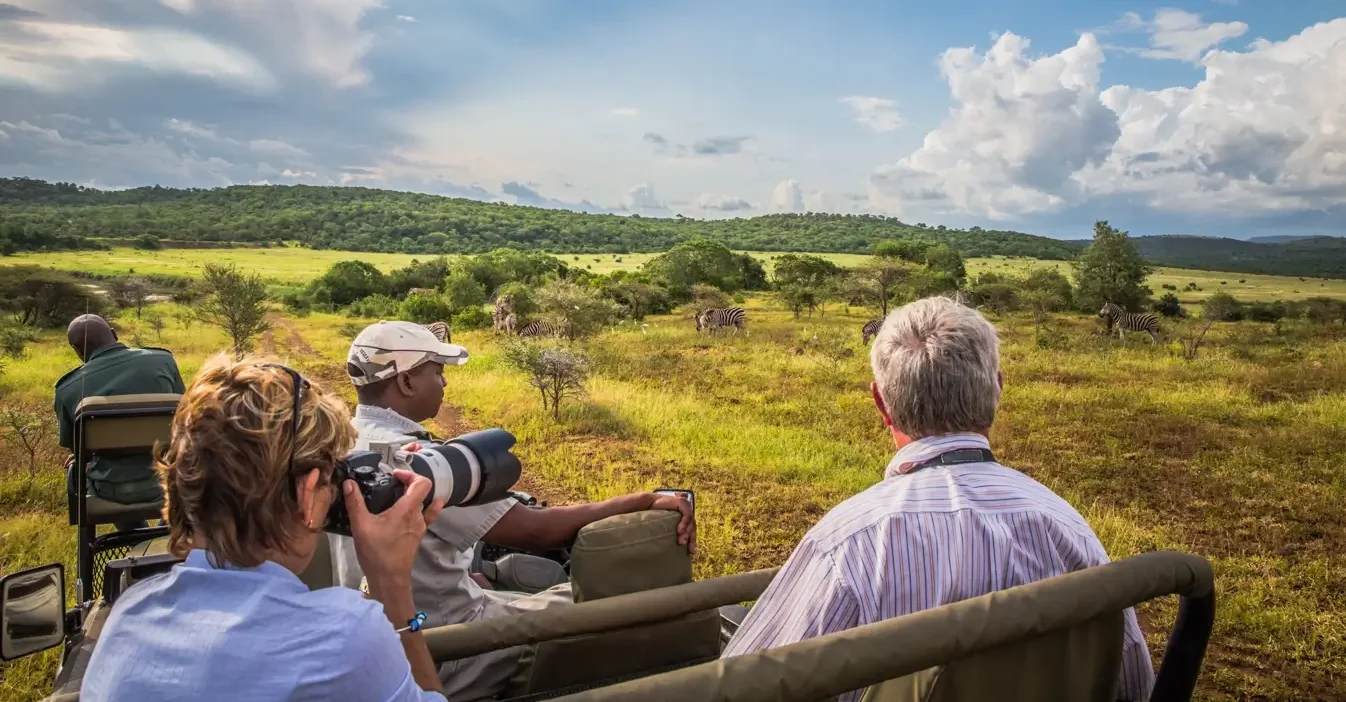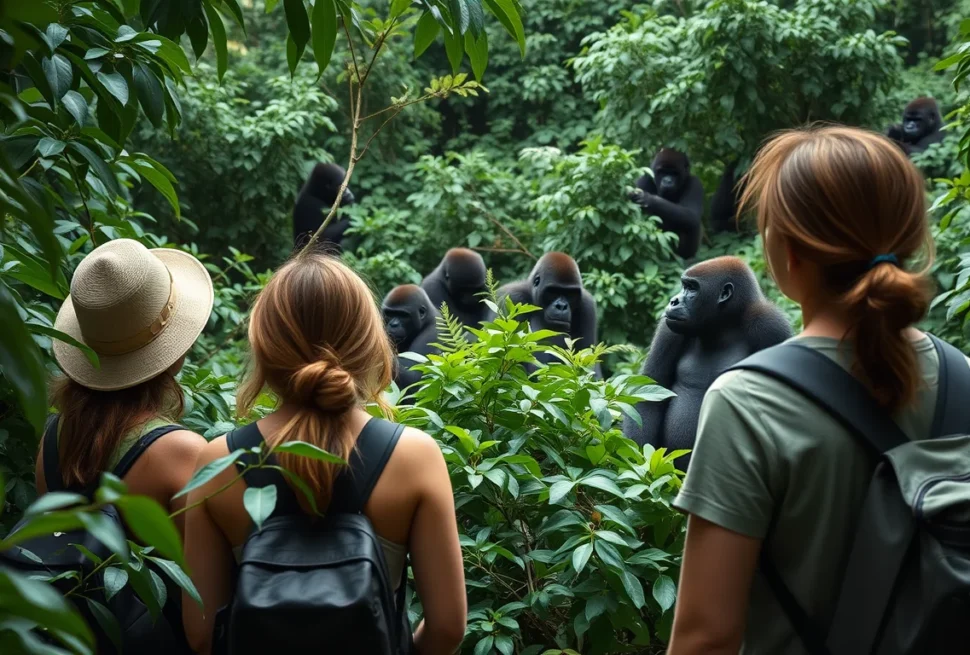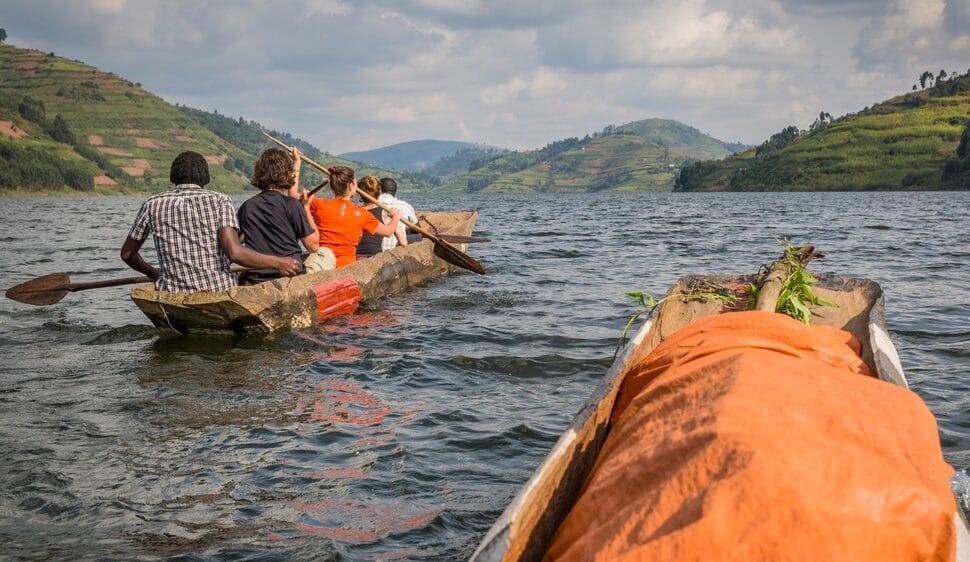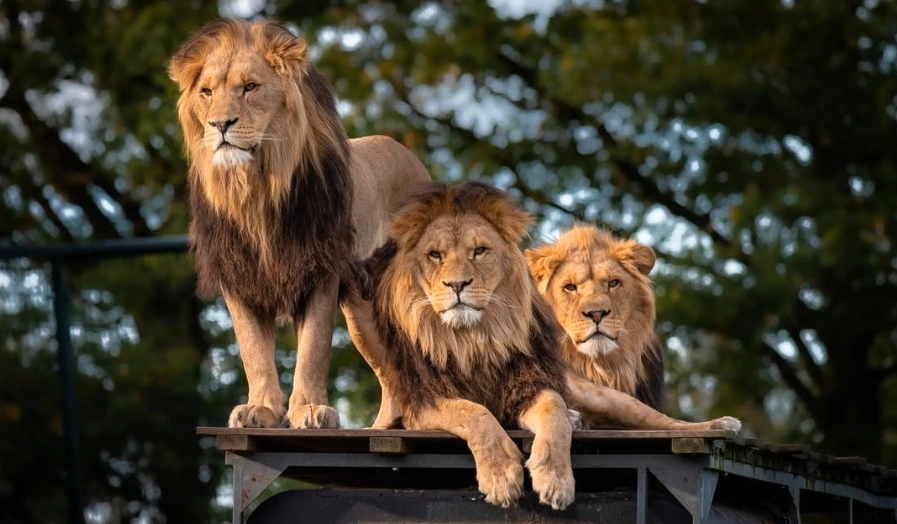A continent teeming with life, where ancient landscapes echo with the thundering hooves of buffalo and the silent, watchful gaze of a leopard. This is East Africa, a realm of unparalleled natural spectacle, and home to the legendary “Big Five.”
But what exactly are these magnificent creatures, and why do they hold such a coveted place in the hearts of safari enthusiasts?
The term “Big Five” originated with big-game hunters, referring to the five most challenging and dangerous animals to hunt on foot: the lion, leopard, elephant, rhino, and Cape buffalo.
Today, for us, it signifies the pinnacle of wildlife viewing, an exhilarating quest to witness Africa’s most iconic species in their wild, untamed habitats.
Key Takeaways
- The “Big Five” are the lion, leopard, elephant, rhino, and Cape buffalo.
- The term originated from big-game hunting, identifying the most dangerous animals to hunt on foot.
- East Africa offers some of the world’s best opportunities to spot all five.
- Responsible tourism is crucial for the conservation of these magnificent species.
- A Big Five safari is an authentic, immersive experience into Africa’s wild heart.
Who Are the African Big Five?
Each member of the Big Five possesses unique characteristics that make them captivating subjects for observation. Let’s get to know them a little better.
1. Lion (Panthera leo)
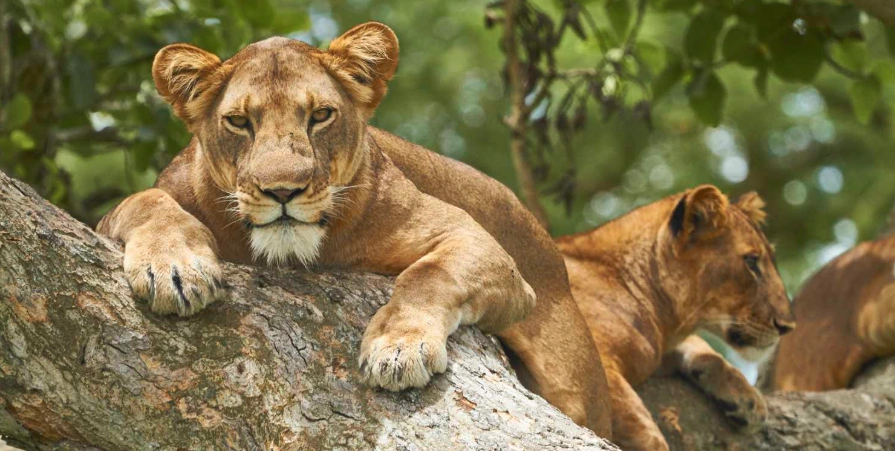
The undisputed monarch of the savanna, the lion embodies strength, power, and social complexity. Witnessing a pride of lions lounging in the golden sun or stalking their prey across the plains is a sight that will forever be etched in your memory.
Their roars, especially at night, are the quintessential sound of the African bush.
2. Leopard (Panthera pardus)
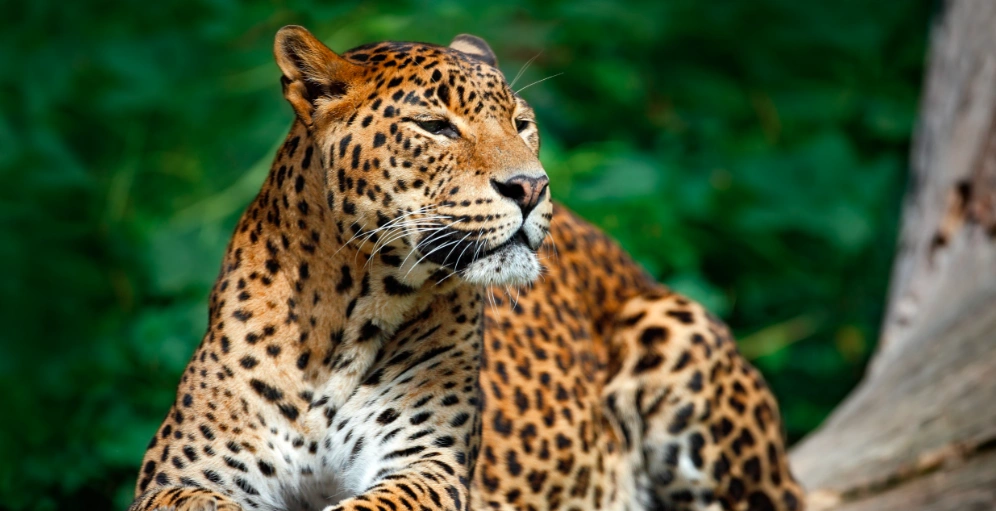
Often considered the most challenging of the Big Five to spot, the leopard is a master of camouflage and stealth.
These solitary, nocturnal hunters are incredibly agile, often dragging their kills up trees to keep them safe from other predators. Catching a glimpse of a leopard in the wild feels like a true privilege.
3. African Elephant (Loxodonta africana)
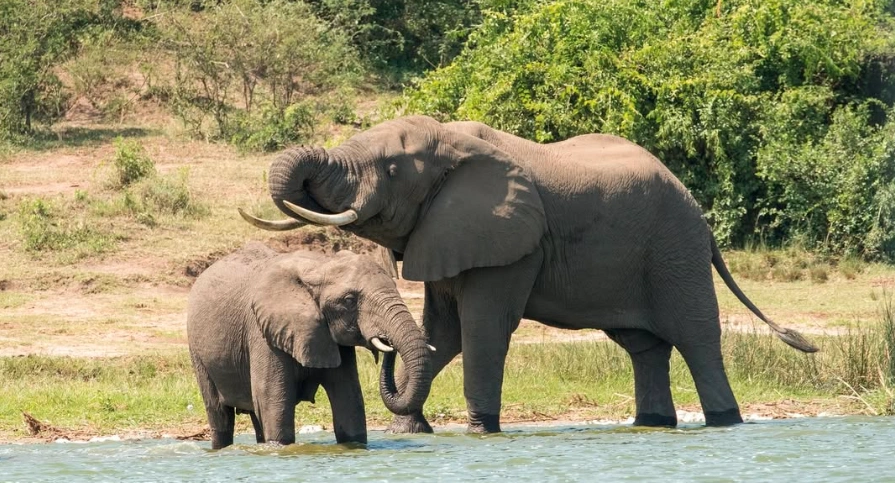
With their immense size, intelligence, and complex social structures, African elephants are truly awe-inspiring.
Watching a herd, from tiny calves to ancient matriarchs, interact at a watering hole or move gracefully through the landscape is a profoundly moving experience. They are the largest land mammals on Earth!
4. Black Rhinoceros (Diceros bicornis) and White Rhinoceros (Ceratotherium simum)
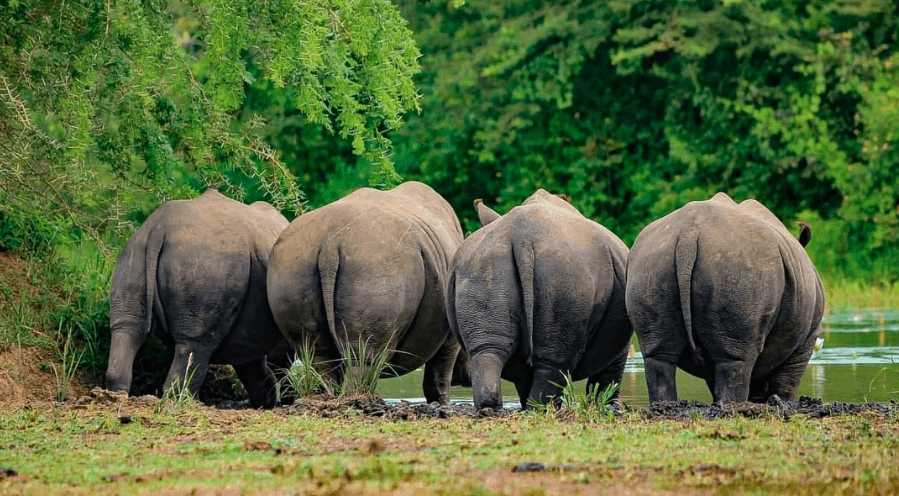
Both the black and white rhinoceros are part of the Big Five, though the black rhino is critically endangered. These powerful, prehistoric-looking creatures are a testament to nature’s incredible diversity.
Rhino sightings are particularly special due to ongoing conservation efforts to protect them from poaching.
5. Cape Buffalo (Syncerus caffer)
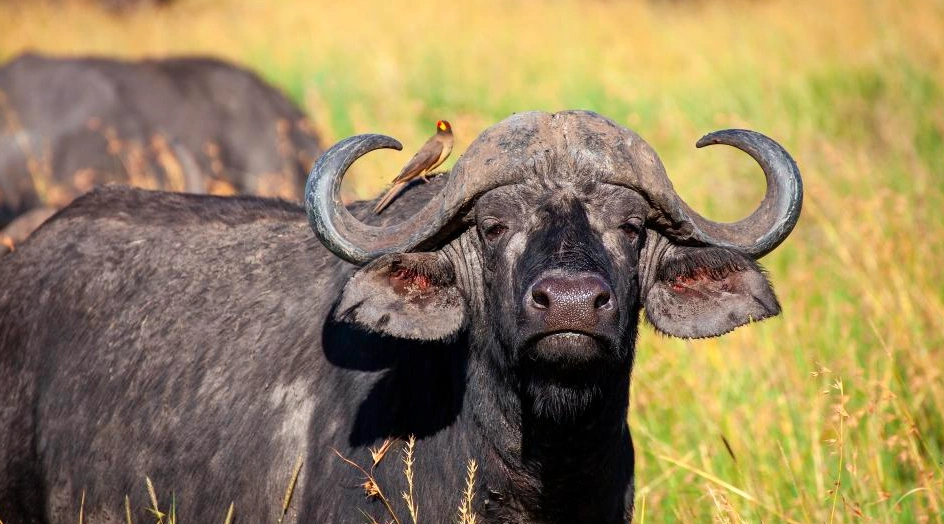
Often underestimated, the Cape buffalo is a powerful and unpredictable animal known for its formidable horns and herd mentality.
They are surprisingly adaptable and can be found in various habitats, from savannas to forests. Witnessing a massive herd moving in unison is a force of nature in itself.
Where to Find the Big Five in East Africa
East Africa is renowned globally as a premier destination for Big Five safaris, offering diverse landscapes and abundant wildlife.
1. Uganda
Uganda, though often celebrated for its incredible gorilla trekking experiences, is a fantastic, often less-crowded destination for Big Five sightings.
a. Murchison Falls National Park
This expansive park is one of the best places in Uganda to spot four of the Big Five: lions, leopards, elephants, and buffalo. For the elusive rhino, you’ll visit the Ziwa Rhino Sanctuary en route to the park, where conservation efforts are bringing these magnificent creatures back.
The boat cruise on the Nile, leading to the powerful Murchison Falls, offers fantastic opportunities for water-based wildlife viewing, including massive crocodiles and hippos.
b. Queen Elizabeth National Park
Famous for its unique tree-climbing lions in the Ishasha sector, Queen Elizabeth National Park also offers excellent chances to see elephants, buffalo, and leopards.
The Kazinga Channel boat safari is a highlight, teeming with diverse birdlife and large concentrations of hippos.
2. Kenya
Kenya’s vast plains and iconic reserves are synonymous with the classic safari experience.
c. Masai Mara National Reserve
Arguably Kenya’s most famous reserve, the Masai Mara offers consistent Big Five sightings.
It’s particularly renowned for its high density of lions and during the Great Migration (July to October), the sheer volume of wildebeest and zebra attracts numerous predators. Leopards are present, though still require patience to spot.
d. Amboseli National Park
Famous for its stunning views of Mount Kilimanjaro and large herds of elephants, Amboseli is a fantastic place to see these gentle giants up close.
You can also expect to see lions, buffalo, and with some luck, leopards. Rhinos are less common here but present.
e. Ol Pejeta Conservancy
Located in Laikipia, Ol Pejeta is a private conservancy that is a stronghold for rhino conservation, particularly black rhinos.
It’s one of the best places in Kenya, and indeed East Africa, to see rhinos reliably, alongside the other Big Four.
3. Tanzania
Tanzania boasts some of Africa’s most iconic and wildlife-rich national parks.
f. Serengeti National Park
The vast plains of the Serengeti are home to an incredible abundance of wildlife, including all of the Big Five. Like the Masai Mara, it’s famous for the Great Migration and offers exceptional lion and leopard sightings.
Elephants and buffalo are widespread. Rhinos are present but rarer, typically found in specific areas.
g. Ngorongoro Crater
Often called the “Eighth Wonder of the World,” this UNESCO World Heritage Site is a natural caldera with an incredibly high concentration of wildlife.
It’s one of the few places where you have a very good chance of seeing all of the Big Five in a single day, thanks to the enclosed nature of the crater. The density of animals here is simply breathtaking.
h. Tarangire National Park
Known for its enormous elephant populations and majestic baobab trees, Tarangire is a fantastic park for elephants and buffalo. Lions and leopards are also present. Rhinos are extremely rare here.
Safeguarding Their Future with Responsible Travel
Witnessing the Big Five in their natural environment is a privilege, and it comes with a responsibility to contribute to their conservation. Poaching, habitat loss, and human-wildlife conflict are constant threats.
When you choose a reputable luxury safari company committed to responsible travel in Uganda and across East Africa, you directly support local communities and conservation initiatives.
Many national parks and conservancies actively engage in anti-poaching patrols, habitat protection, and community education programs.
Organizations like the African Wildlife Foundation are doing incredible work on the ground to protect these animals and their habitats. Consider learning more about their efforts!
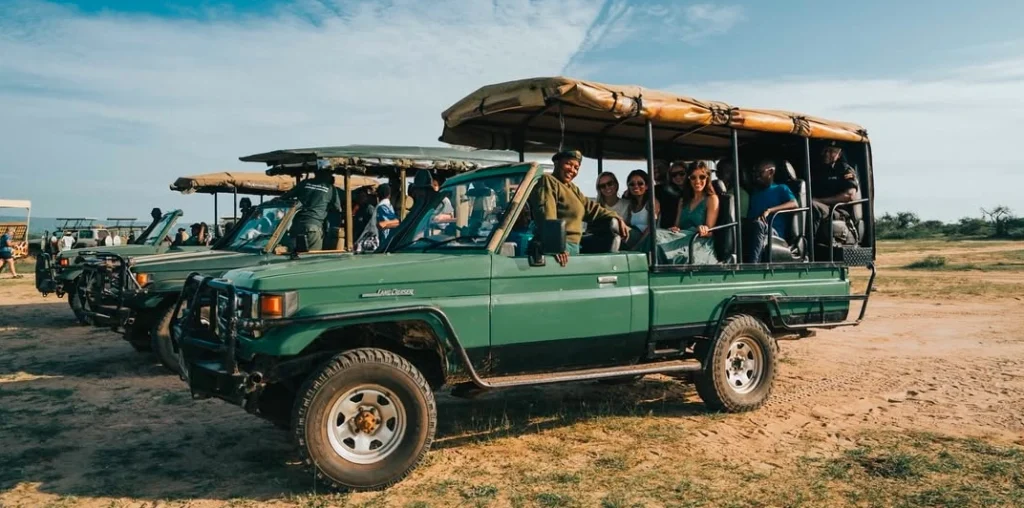
Planning Your Big Five Safari Adventure
A Big Five safari is more than just a trip; it’s an immersive journey into the wild heart of Africa. To make the most of your experience, consider these expert tips:
- Timing is key: The best time to see the Big Five in Uganda] (and generally East Africa) is during the dry season (June to October), when animals congregate around water sources, making them easier to spot.
- Expert Guides: Our seasoned guides are not just drivers; they are passionate naturalists with an encyclopedic knowledge of the local wildlife and ecosystems. Their expertise significantly enhances your chances of incredible sightings.
- Packing Smart: Be prepared for varying conditions. Light, neutral-colored clothing is advisable. Don’t forget a good camera with a telephoto lens to capture those incredible moments!
For more specific advice, check out our guide on what to pack for gorilla trekking, much of which applies to general safaris.
Ready to embark on your own thrilling quest to witness Africa’s legendary Big Five? Let us craft an unforgettable, authentic journey tailored to your desires. Request a quote today and let the adventure begin!
FAQs About the Big Five
Q1: Is it guaranteed I will see all of the Big Five on my safari?
A1: While we strive to maximize your chances, seeing all five is never guaranteed. These are wild animals in their natural habitats, and sightings depend on various factors like weather, animal movements, and sheer luck!
However, by visiting multiple parks and having experienced guides, your chances are significantly increased.
Q2: What is the main difference between a Big Five safari in Uganda, Kenya, and Tanzania?
A2: While all three offer excellent Big Five experiences, Uganda provides a more intimate, off-the-beaten-path feel with the added bonus of gorilla trekking.
Kenya offers the classic, expansive plains safari. Tanzania, especially the Ngorongoro Crater, boasts an incredibly high concentration of wildlife.
Q3: How close can we get to the Big Five animals?
A3: Safari regulations and ethical guidelines dictate safe and respectful distances to ensure the well-being of the animals and your safety.
Your guide will always maintain an appropriate distance, allowing for excellent viewing without disturbing the wildlife.
Q4: Are Big Five safaris suitable for families?
A4: Absolutely! Many Big Five safari lodges and camps are family-friendly, offering activities tailored for children. It’s an incredible educational and awe-inspiring experience for all ages.
We can even advise on specific considerations like gorilla trekking for families in Uganda.
Q5: What kind of vehicle is used for a Big Five safari?
A5: Typically, you’ll be in custom-built 4×4 safari vehicles with pop-up roofs, providing excellent visibility for game viewing and photography.
These vehicles are designed for comfort and durability on diverse terrain.

